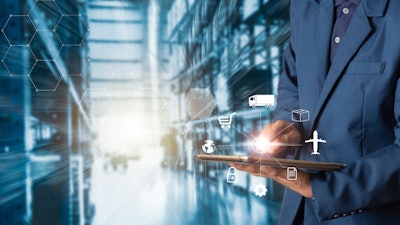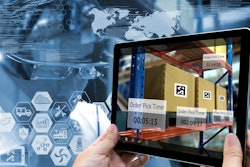
The race to innovate has always lurked in the back of retailers’ and consumer packaged goods (CPGs’) minds, but the last two years have moved that need to the forefront.
That’s because big transformations are underway in retail amidst inflation, supply chain uncertainties and a seismic shift in consumer behaviors. Analysts estimate that most businesses went through nearly a decade’s worth of digital transformations just in the last 2-plus years. In retail sectors that historically are slower to evolve technologically, like grocery, it wouldn’t be surprising if the transformation rate was even higher.
Getting started – let alone keeping up – is a challenge. Most organizations can’t simply close shop for however long it takes to digitally transform their businesses. It’s a bit like a new highway built to accommodate a rapidly growing metro area: its takes so long to complete that by the time it’s done, the growing number of new vehicles in the area will already have rendered the infrastructure obsolete by clogging it with additional traffic.
To keep pace in this digital arms race, grocers and CPGs need to embrace innovation by adopting modern data- and artificial intelligence (AI)-driven solutions that help find every competitive edge possible. One sensible path is to find innovative ways to use data by looking into predictive data analytics to assist with AI-based demand forecasting, allocation, replenishment and other supply chain functions.
Acknowledgement is accelerating, but adoption isn’t moving as quickly
Nearly 90% of retailers agree that there is value in using predictive algorithms to improve their supply chains, yet only 6% consider themselves to be early adopters. That’s a notable gap for something widely recognized as valuable. But why is it that when navigating the increasingly complex world of global supply chains requires retailers to use analytics more effectively?
Instead of being forced reluctantly into this transformation, retailers and CPGs need to take a step back, take a deep breath, and adopt new solutions proactively at their own pace. If they don’t, odds are their transformations will be done under pressure, with sub-optimal results and will lead to even further frustrations as failed projects are scrapped and restarted.
The do’s and don’ts of digital transformation
Transforming a business with data science is a major undertaking with significant long-term implications. The stakes are high, and the investment can be considerable, so retailers need to thoroughly assess solution providers. Doing so establishes a baseline of competency and strategic alignment on the role of the systems, unlocking maximum value from the technology and laying the groundwork for successful change management.
One of the most important aspects of adopting new solutions is simply getting started, often with fundamentals like data hygiene, governance and management. After all, using data-based models means predictions and forecasts are only as good as the data they consume, so ensuring that a data management framework is in place with access to multiple sources of clean, relevant, and accurate data is foundational.
Some businesses choose to approach this transformation by themselves, but at their own risk. It’s not to say it’s impossible to do so, but the effort required to establish modern data practices from the ground up is an unenviable task. It requires scores of specialists and large data science-savvy teams simply to get such a program off the ground, let alone the time required for the business to eventually transform. Taking such a resource-intensive approach introduces more risk than finding the right partner with both supply chain domain and AI technology expertise.
Move forward but only when ready
AI-powered solutions can help organizations achieve breakthrough performance, but not every organization is ready for rapid change. And that’s okay because it is better to recognize the organization’s tolerance for change and do project planning accordingly rather than jumping into the deep end. However, when the time comes, business leaders and change agents need to ask potential partners questions such as:
- Is the platform open and flexible to accommodate multiple data sources? Retailers operate disparate systems, so compatibility is key.
- How will AI help my company mitigate risk in areas such as supply chain, demand forecasting and product sourcing? Retail is a complex industry where many things can go wrong, but AI can limit the downside while maximizing the upside.
- How much experience does the vendor have delivering measurable results in actual retail and CPG organizations using its science-based solutions? AI technology that performs well in controlled lab environments may not prove robust in fast-changing, unpredictable market situations, and machine learning models are much stronger once they have had the opportunity to evolve based on real-world experience.
An important consideration is whether the solutions being evaluated are purpose-built for the food logistics industry. The dynamics of the industry are unique due to sales velocities, wide variations in consumer demand, and supply chain characteristics. Because of the speed of these transformations, it’s also worthwhile for retailers to have conversations around integrations with CPG partners and vice-versa to help them identify mutually beneficial areas with such a solution. If both CPG and retailers can avail themselves of shareable data and solutions, it’s one more edge they can gain on the competition.
One step at a time
Speed has always mattered when it comes to grocery retail and CPG. AI and machine learning have gained rapid recent momentum because they are great enablers of speed and business agility. They’re the engines of actionable insights that allow retailers to move faster and with greater confidence that supply chain organizations will make the right strategic decisions at speed and deliver the desired business and financial results.
However, this doesn’t mean that organizations can’t adopt at the pace that best suits their culture and business. In an era of rapid change, organizations must prepare for adoption of innovative technologies with a thoughtful approach that is designed to succeed within the constraints of their unique environments.




















